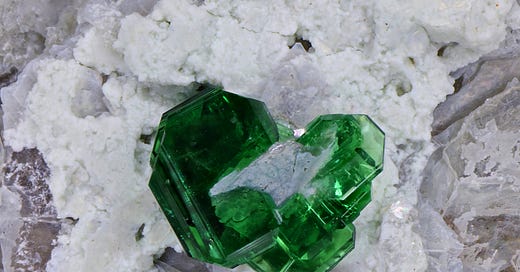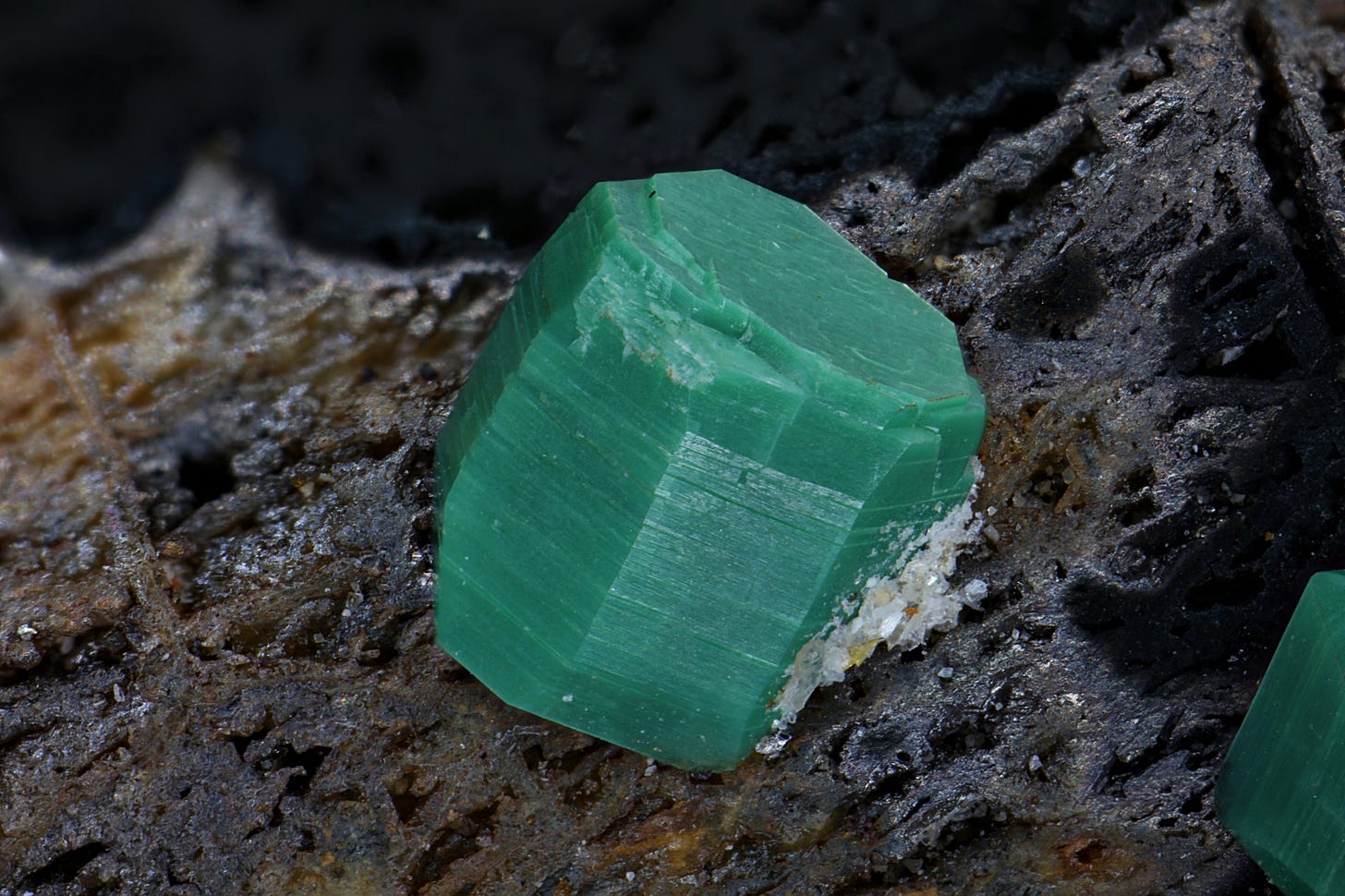A good question. Torbernite, a copper uranium phosphate, dehydrates over time, or when heated above 75°C, altering to metatorbernite.
So what is the difference?
Well torbernite, formula Cu(UO2)2(PO4)2·12H2O, has slightly more water than metatorbernite, formula Cu(UO2)2(PO4)2·8H2O. That is ·12 to ·8.
Generally, torbernite is transparent and have a glassy lustre, whereas, usually, metatorbernite is opaque and dull. But not always. Sometimes, metatorbernite can be transparent and lustrous, just to confuse you! The latter occurs when metatorbernite forms directly from a supersaturated solution, resulting in a different crystal form with a darker green colour and higher translucency.
But a generally accepted rule of thumb, for specimens without analysis, is that torbernite is transparent, and metatorbernite is opaque.
If you want to know more about the Lake Boga locality where the specimens below come from, I have produced a Collector’s Guide, available electronically on Kofi or in print form at Lulu.
Below: Torbernite, Lake Boga, Victoria. Width of view 6.5mm.
Below: Metatorbernite, Lake Boga, Victoria. Width of view 5mm.






Beautiful!
🫢🫢🫢